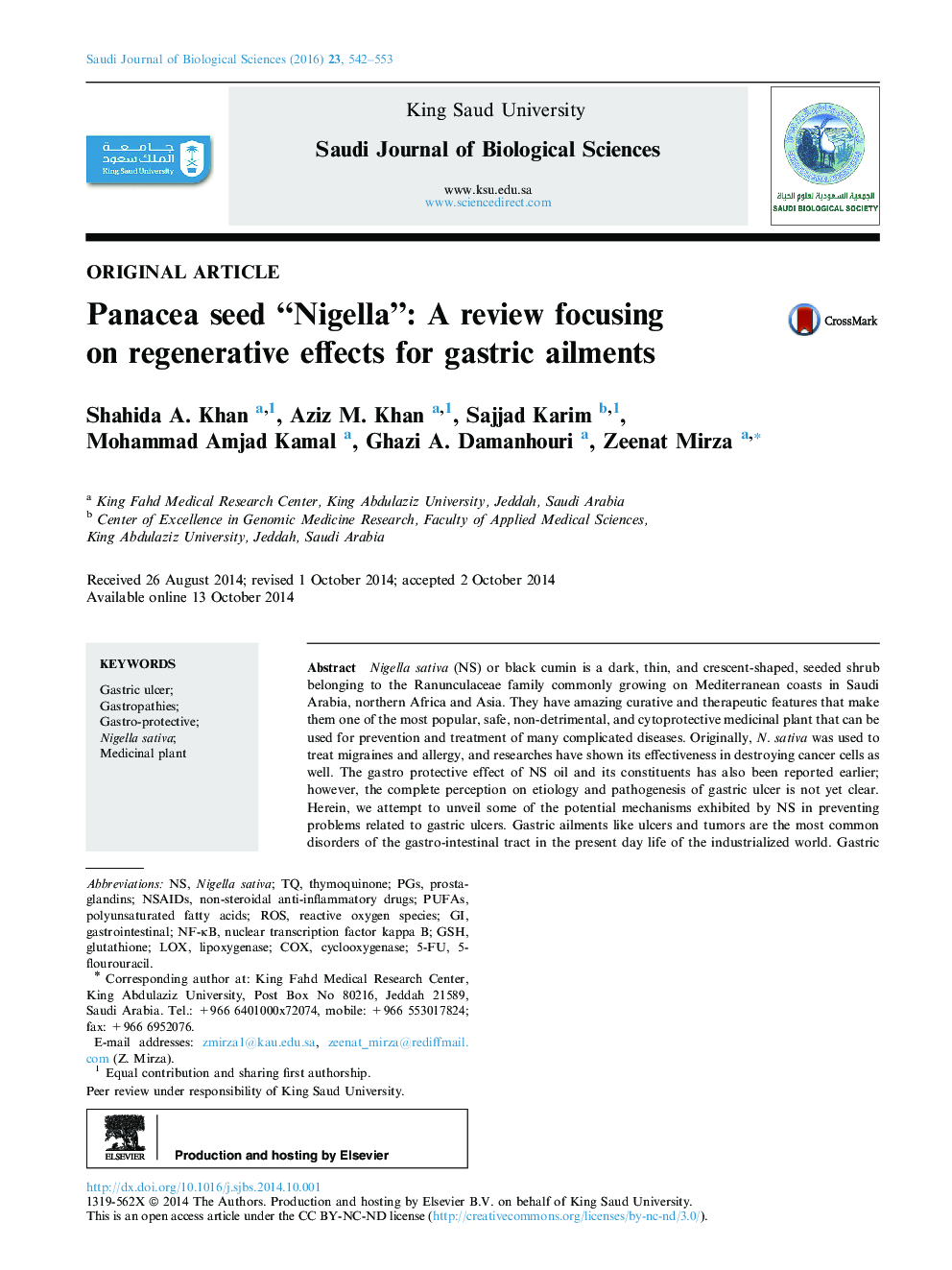| Article ID | Journal | Published Year | Pages | File Type |
|---|---|---|---|---|
| 4406162 | Saudi Journal of Biological Sciences | 2016 | 12 Pages |
Nigella sativa (NS) or black cumin is a dark, thin, and crescent-shaped, seeded shrub belonging to the Ranunculaceae family commonly growing on Mediterranean coasts in Saudi Arabia, northern Africa and Asia. They have amazing curative and therapeutic features that make them one of the most popular, safe, non-detrimental, and cytoprotective medicinal plant that can be used for prevention and treatment of many complicated diseases. Originally, N. sativa was used to treat migraines and allergy, and researches have shown its effectiveness in destroying cancer cells as well. The gastro protective effect of NS oil and its constituents has also been reported earlier; however, the complete perception on etiology and pathogenesis of gastric ulcer is not yet clear. Herein, we attempt to unveil some of the potential mechanisms exhibited by NS in preventing problems related to gastric ulcers. Gastric ailments like ulcers and tumors are the most common disorders of the gastro-intestinal tract in the present day life of the industrialized world. Gastric ulcer being a multifaceted problem exhibits complex etiology and is the fourth most common cause of cancer mortality. Drug interactions and toxicity are the main hindrances in chemotherapy. The existing merits and demerits of modern-day drugs make us turn toward the plant kingdom which may provide a valuable resource of novel potent natural compounds for pharmaceuticals or alternately, as dietary supplements. In this context, the revered phytotherapeutic N. sativa comes as a promising savior in today’s times. This review aims to summarize, both the functional and disease-related effects in the area of gastroenterology.
